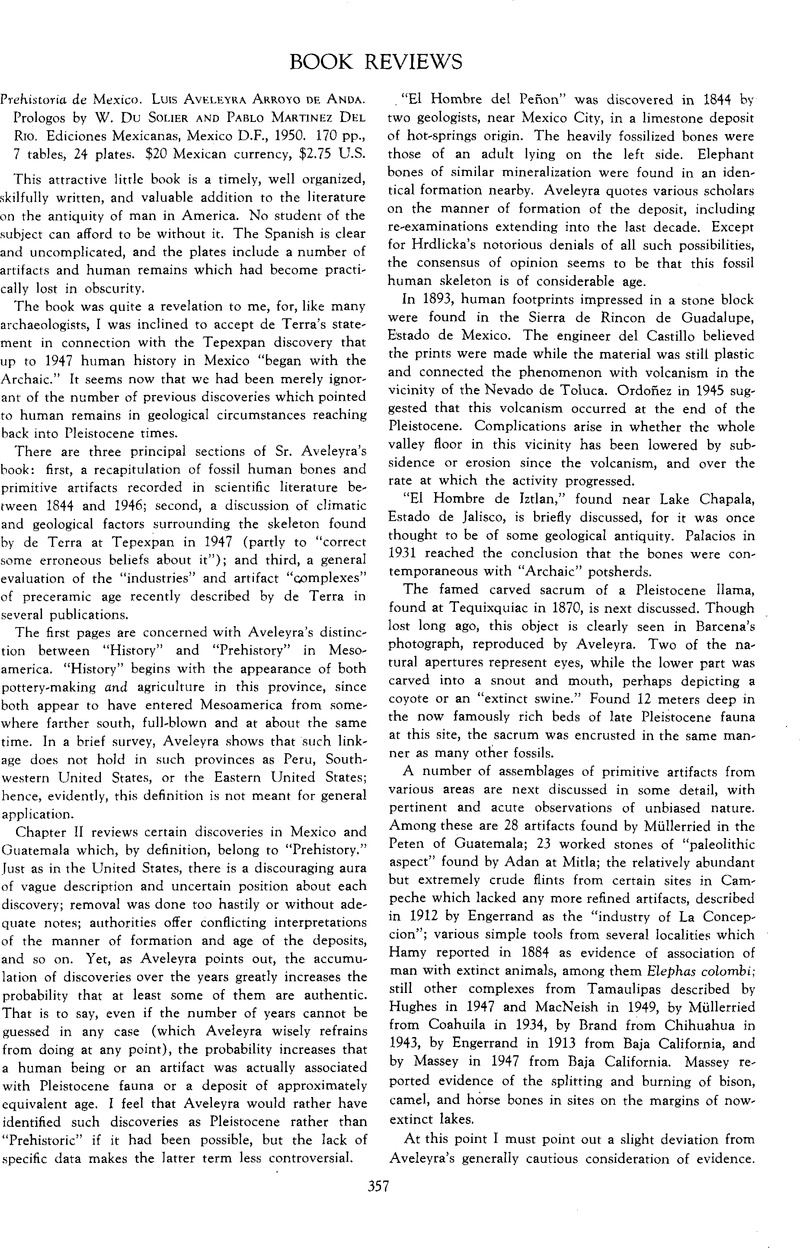Published online by Cambridge University Press: 25 January 2017

1 In May 1949 two of these excavations were visited by the reviewer in company with geologist Glen L. Evans. In the rock shelter Tm 81, where the supposed Diablo Focus was first described, a short trench running down slope from the shelter floor reached the top of a small terrace remnant. A few fragmentary flint artifacts from the foot of this trench were not actually in the terrace, and there was no means of dating the latter in geological terms. Cerrainly the estimated age of 20,000 years for these artifacts is without foundation. The purported placement of the Repelo complex as earlier than “Archaic” is also without foundation, in my opinion, since this has merely been stated, not demonstrated by any specific situation.
2 I was informed by geologist A. R. V. Arellano in Mexico City in June, 1950, that this is the correct rerminology: El Risco for lake levels only, and Becerrafor the sediments underlying the caliche. This and various orher matters were discussed in my review of rhe Tepexpan Man publication (American Antiquity, Vol. 15, No. 4, pp. 343-49, 1950). Aveleyra has been most careful to employ the accepted geological terms.
3 In a paper read before the annual meeting of rhe Society for American Archaeology in Norman, Oklahoma, May 19, 1950, I had proposed precisely the same definition. It would provide a furthet convenience if such a vague term as “Early Man” could be confined to man of the Pleistocene.
4 An example may be seen in the two objects in Pl. 21, A, B, already described by de Terra as “Folsomoid.” While showing that such affinity is very doubtful, Aveleyra now considers the point in Pl. 21, B as more like a Plainview point. Unfortunately this identification cannot be supported either. There are probably many distinct types among the lanceolate-shaped projectiles, few of which have been properly defined.